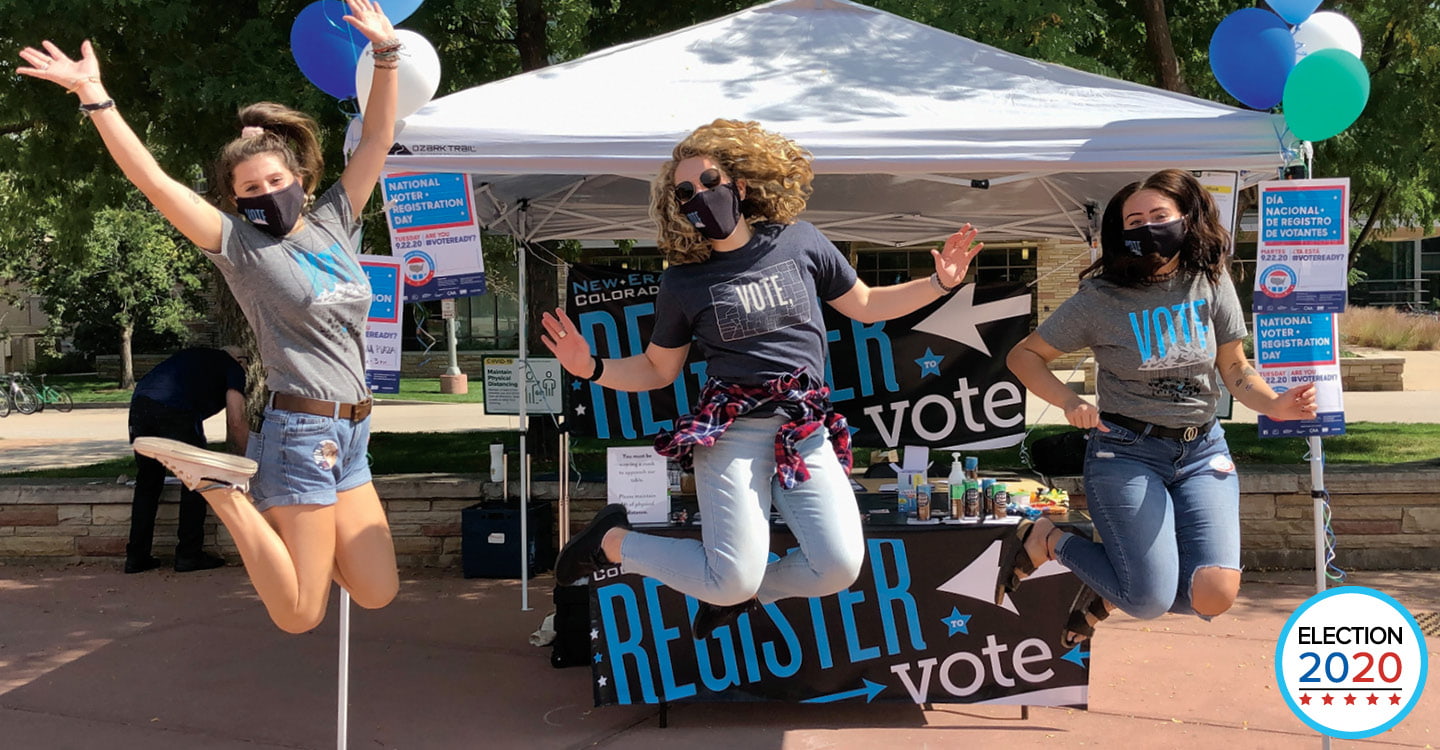Cora Martin spends 15 to 20 hours a week reaching out to fellow students at the University of North Carolina, Chapel Hill. Joining them in their Zoom classes, she makes five-minute pitches about registering to vote and requesting a mail-in ballot.
She also has made hundreds of calls to people under 25, who don’t usually get tapped by other voter outreach groups. And everywhere she goes, she spreads her message about the importance of voting.
“I can’t imagine not wanting to devote all my time to this election,” says Martin, a 20-year-old sophomore, who does all this work for NextGen America, a youth voter mobilization group.
Martin is part of a small army of young volunteers that NextGen America has deployed to 11 battleground states—the ones most likely to decide the election—to register young people and make sure they cast ballots.
Cora Martin spends 15 to 20 hours a week getting other young people ready for the November election. Most of her work involves reaching out to fellow students at the University of North Carolina, Chapel Hill. She connects with them in their Zoom classes. In those sessions, she makes five-minute pitches about registering to vote and requesting a mail-in ballot.
She also has made hundreds of calls to people under 25, who don’t usually get tapped by other voter outreach groups. And everywhere she goes, she spreads her message about the importance of voting.
“I can’t imagine not wanting to devote all my time to this election,” says Martin, a 20-year-old sophomore. She does all this work for NextGen America, a youth voter mobilization group.
Martin is part of a small army of young volunteers. NextGen America has positioned them in 11 battleground states. Those states are the ones most likely to decide the election. There, these youth volunteers work to register young people and make sure they cast ballots.

